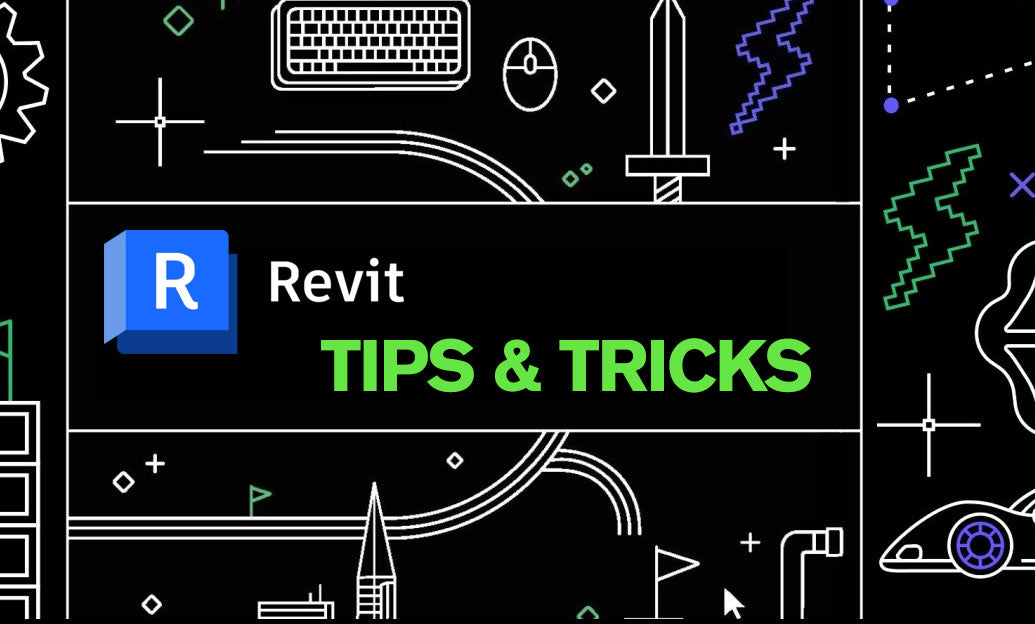Your Cart is Empty
Customer Testimonials
-
"Great customer service. The folks at Novedge were super helpful in navigating a somewhat complicated order including software upgrades and serial numbers in various stages of inactivity. They were friendly and helpful throughout the process.."
Ruben Ruckmark
"Quick & very helpful. We have been using Novedge for years and are very happy with their quick service when we need to make a purchase and excellent support resolving any issues."
Will Woodson
"Scott is the best. He reminds me about subscriptions dates, guides me in the correct direction for updates. He always responds promptly to me. He is literally the reason I continue to work with Novedge and will do so in the future."
Edward Mchugh
"Calvin Lok is “the man”. After my purchase of Sketchup 2021, he called me and provided step-by-step instructions to ease me through difficulties I was having with the setup of my new software."
Mike Borzage
Design Software History: The Evolution and Impact of Real-Time Visualization in Architectural Design Software
January 19, 2025 7 min read


Definition and Importance
Real-time visualization in architecture refers to the instantaneous rendering of 3D models, allowing architects, designers, and clients to navigate and interact with architectural spaces as if they were physically present. This technology harnesses powerful graphics processing to provide immediate feedback on design changes, material selections, lighting, and other critical elements. The advent of real-time visualization has been a transformative force in architectural design, bridging the gap between conceptual ideas and tangible experiences. It enables architects to convey complex designs intuitively, facilitating better understanding and communication among stakeholders. Companies like Autodesk and Unreal Engine have been pioneers in this field, integrating real-time rendering capabilities into their platforms. The importance of this technology lies in its ability to enhance decision-making processes by providing immersive and interactive presentations. Instead of relying on static images or slow-rendering animations, architects can now showcase designs that respond in real-time to inputs, offering a more engaging and informative experience. This immediacy helps in identifying potential issues early in the design phase, saving time and resources. Moreover, clients can visualize the end product more accurately, leading to informed approvals and satisfaction. The role of real-time visualization extends beyond presentation; it influences the design process itself. Architects can experiment with different scenarios quickly, fostering creativity and innovation. The integration of real-time visualization has become an essential aspect of modern architectural practices, setting new standards for efficiency and collaboration in the industry.
Early Efforts in Architectural Visualization
Before the advent of modern software, architectural visualization was a labor-intensive process involving hand-drawn sketches, physical models, and rudimentary computer graphics. Architects like Frank Lloyd Wright and Le Corbusier relied on detailed drawings and scale models to communicate their visions. These traditional methods, while artistically rich, had significant limitations in conveying spatial dynamics and material realism. The late 20th century saw the introduction of computer-aided design (CAD) tools like AutoCAD, developed by Autodesk in 1982, which revolutionized drafting but still lacked advanced visualization capabilities. Early visualization software such as 3D Studio allowed for basic 3D modeling and rendering but required extensive time to produce static images. The processing power of computers at the time was a major constraint, making real-time rendering unfeasible. Animations were pre-rendered and could take days to complete, limiting their practicality for iterative design processes. Furthermore, the lack of integration between modeling and visualization tools meant that changes in design required manual updates across different platforms. This inefficiency hindered collaboration and slowed down project timelines. Architects faced challenges in effectively communicating ideas to clients, who often struggled to interpret 2D plans and static 3D renderings. The need for more dynamic and interactive tools became apparent as projects grew in complexity and client expectations increased. These early efforts laid the groundwork for the development of more sophisticated visualization technologies, highlighting the demand for real-time interaction and immersive experiences in architectural design.
Origin of Lumion
Lumion was created by Act-3D B.V., a Dutch company founded by Stefan Boeykens, Ferry Marcellis, and Arthur Boelens in 2001. Initially focusing on real-time simulation technologies, Act-3D recognized the growing demand for intuitive and powerful visualization tools in architecture. In 2010, they introduced Lumion as a response to the industry's need for real-time architectural visualization software that was accessible to architects without extensive graphics or programming backgrounds. Lumion aimed to fill specific gaps in architectural design by providing a platform that combined ease of use with advanced rendering capabilities. The founders observed that existing tools were either too technical or lacked the necessary features to produce high-quality visualizations efficiently. Lumion was designed to integrate seamlessly with popular CAD software, enabling architects to import their models directly and begin visualizing them in real-time. The launch of Lumion marked a significant milestone in the industry, offering a solution that democratized access to professional-grade visualization. By focusing on the needs of architects and designers, Act-3D positioned Lumion as a tool that could enhance creativity, improve communication with clients, and streamline the design process. The software quickly gained popularity, becoming an essential tool for firms looking to enhance their presentations and stay competitive in a rapidly evolving market.
Technological Advancements and Features
Lumion set itself apart from previous tools through a combination of innovative features and technological advancements. One of its key strengths was its user-friendly interface, which allowed architects to produce stunning visualizations without specialized training. The software leveraged advancements in graphics processing, utilizing GPUs to enable real-time rendering of complex scenes. This capability meant that changes to designs, materials, lighting, and weather effects could be seen instantly. Lumion introduced an extensive library of assets, including trees, people, vehicles, and materials, which could be easily integrated into projects to enhance realism. The integration with popular CAD software like Revit, SketchUp, and ArchiCAD streamlined workflows, allowing for seamless model imports and updates. Another groundbreaking feature was Lumion's ability to render both images and animations quickly, significantly reducing the time required compared to traditional rendering tools. The software's developers continually pushed the boundaries by incorporating new technologies such as volumetric lighting, hyperlight, and high-fidelity terrain creation. They also focused on optimizing performance so that even large-scale projects could be visualized efficiently. The combination of these features made Lumion a powerful tool for architects seeking to enhance their design presentations. It enabled users to create immersive environments that could convey the atmosphere and experience of spaces effectively. By prioritizing ease of use and integration, Lumion addressed the critical needs of the architectural community, setting new standards for what visualization software could achieve.
Enhancing Design Processes
Lumion has played a pivotal role in enhancing architectural design processes by making visualization an integral part of concept development and client communication. Architects can now experiment with different design ideas dynamically, adjusting elements such as textures, colors, and lighting on the fly. This interactivity fosters a more iterative and explorative approach to design, encouraging creativity and innovation. The ability to produce high-quality visualizations quickly means that design teams can receive immediate feedback from clients and stakeholders, reducing misunderstandings and facilitating better decision-making. Lumion's impact is evident in the way it has improved collaboration among project teams. By providing intuitive visual representations, it bridges the gap between technical drawings and client comprehension. Clients can virtually walk through proposed spaces, experiencing the design as intended. This immersive quality enhances engagement and generates excitement about the project. Additionally, Lumion supports the incorporation of environmental context, allowing architects to show how buildings interact with their surroundings. The software's tools for simulating weather, time of day, and even seasonal changes contribute to a more comprehensive understanding of the design's impact. Overall, Lumion has empowered architects to communicate their visions more effectively, streamline their workflows, and produce more thoughtful and responsive designs.
Widening Accessibility and Adoption
Lumion's approachable design and affordability have democratized access to high-quality visualization tools, benefiting smaller firms and independent architects who previously could not afford expensive or complex software. By lowering the barriers to entry, Lumion has expanded the use of advanced visualization across the industry. Notable architectural firms such as Foster + Partners and Gensler have adopted Lumion to enhance their workflows and presentations, citing its efficiency and output quality. Educational institutions have also integrated Lumion into their curricula, recognizing its value in preparing students for modern architectural practices. The widespread adoption is further supported by a strong user community and comprehensive learning resources provided by Act-3D. This community fosters knowledge sharing and innovation, as users contribute tutorials, plugins, and support for one another. The accessibility of Lumion has led to a leveling of the playing field, enabling talented designers from various backgrounds to showcase their work at a professional standard. By empowering a broader range of architects with the tools to create compelling visualizations, Lumion has contributed to a more competitive and dynamic industry.
Lumion's Legacy in Real-Time Visualization
Lumion's introduction and ongoing development have had a lasting impact on real-time visualization in architecture. By setting a new benchmark for ease of use and rendering quality, it has influenced other software developers to enhance their offerings, driving innovation across the industry. Lumion has fundamentally changed design processes and client interactions, making high-quality visualization an expected component of architectural practice. The software's emphasis on real-time feedback and immersive experiences has reshaped how architects approach design challenges, encouraging a more fluid and responsive methodology. Lumion's legacy is evident in the greater appreciation for visualization as a crucial communication tool rather than a mere aesthetic enhancement. It has helped to elevate the profession by enabling architects to express their ideas more vividly and accurately, leading to better-designed buildings and satisfied clients.
Future Prospects in Architectural Visualization
The future of architectural visualization is poised to further embrace technologies such as virtual reality (VR), augmented reality (AR), and artificial intelligence (AI). Lumion and similar software are expected to integrate VR capabilities, allowing clients and designers to fully immerse themselves in virtual environments. AI-enhanced design tools may assist in automating routine tasks, optimizing designs based on data analysis, and providing intelligent suggestions. Real-time visualization will continue to evolve, with even more realistic rendering enabled by advancements in hardware and software algorithms. The potential incorporation of cloud-based rendering could make high-end visualization accessible on a wider range of devices. Lumion may adapt by expanding its feature set to include collaborative online platforms, where design teams can work together in real-time, regardless of location. The integration of generative design tools and sustainability analysis could also become standard, aiding architects in creating more efficient and environmentally friendly buildings. As the demands of the industry grow, software like Lumion will need to continue innovating to meet the challenges of an increasingly digital and connected world, ensuring that architects have the tools they need to shape the built environment effectively.
Also in Design News

ZBrush Tip: Enhancing Symmetrical Modeling in ZBrush with the Curve Lathe Brush
March 13, 2025 2 min read
Read More
Revit Tip: Enhancing Building Energy Efficiency with Revit's Advanced Analysis Tools
March 13, 2025 2 min read
Read More
AutoCAD Tip: Enhance Polyline Editing Precision in AutoCAD: Essential Tips and Techniques
March 13, 2025 2 min read
Read MoreSubscribe
Sign up to get the latest on sales, new releases and more …


